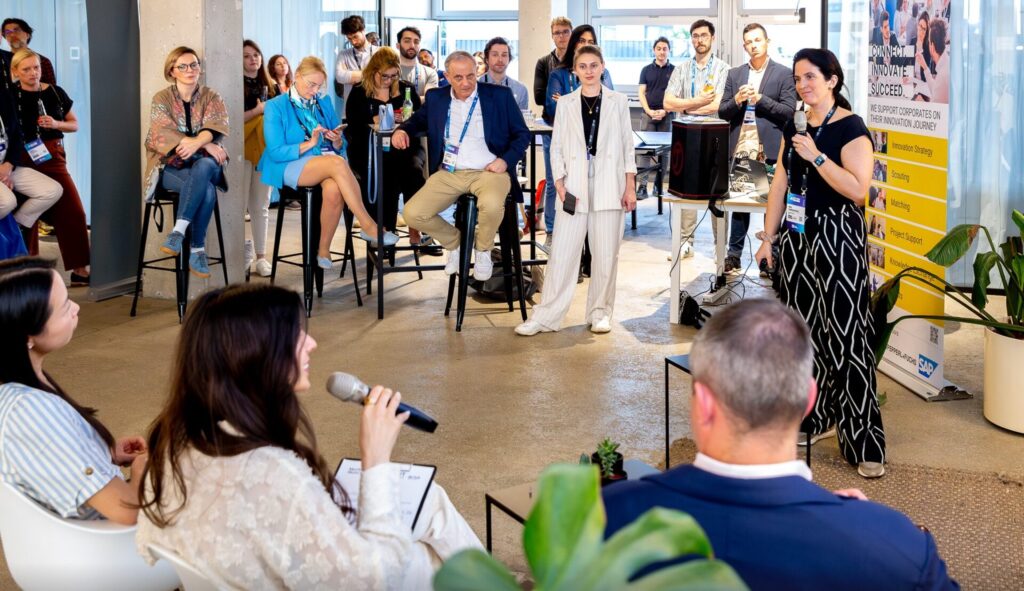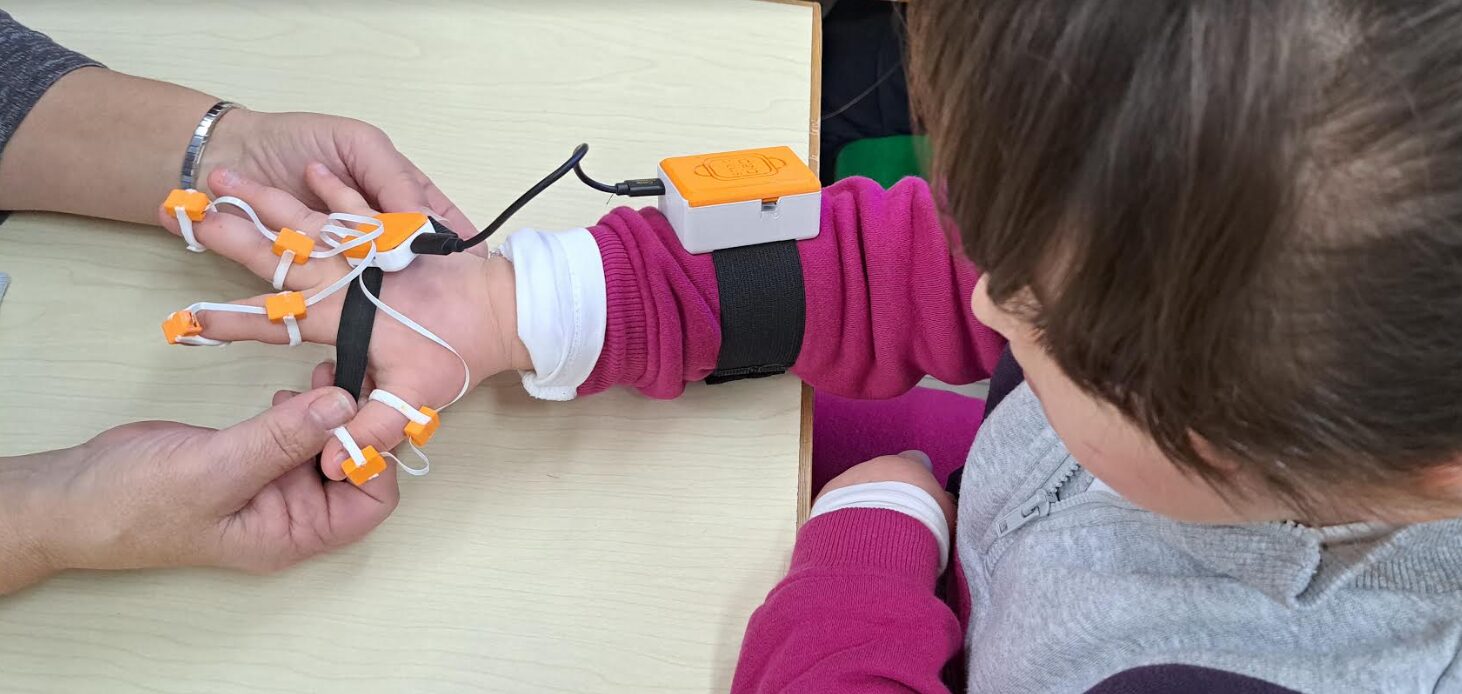
Matthew Calleja
5th April 2024
Lending a helping hand: DigiClap’s achievements in Cerebral Palsy
It takes only a moment to imagine the daily hurdles faced by parents whose children have to confront the formidable obstacles of Cerebral Palsy (CP). Tasks as routine as feeding or playing turn Herculean, as the disability persistently hampers their child’s movements and posture.
Yet, amidst these challenges, what strides is DIGICLAP, a local innovation consisting of a smart wearable device, making to alleviate the burdens of this disability? This article delves into the innovations of DIGICLAP, and how it promises to enhance the lives of thousands of children.
The stark reality of managing Cerebral Palsy
“The abilities and limitations of children with Cerebral Palsy vary greatly. A personalised, patient-centric solution is needed; one that enriches the therapy experience for both the child and the therapist.”
– Professor Philip Farrugia, Product Designer and Lead Inventor, SMARTCLAP
CP is the primary cause of significant childhood physical disability, with a prevalence of 1.6 per 1,000 live births in Europe and impacting roughly 17 million worldwide.
The impact of CP on children’s lives is significant, but fortunately, it’s not a progressive condition. There are treatments available, including medications and surgery, aimed at improving motor skills.
However, managing CP isn’t straightforward. It involves intensive therapy sessions and navigating the challenges of living with the disorder throughout a child’s life. In essence, the abilities and limitations of children with CP vary widely, and current habilitation methods often lack personalisation.
This is the sobering reality expertly illustrated by Prof. Philip Farrugia, the insightful lead behind DIGICLAP, shedding light on the challenges faced by affected children, concerned parents, and dedicated therapists worldwide.
What innovative solutions does DIGICLAP propose to improve the situation?
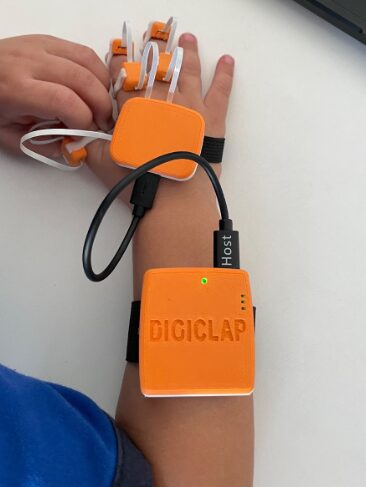
“With our wearable, DIGICLAP,” the professor explained with enthusiasm, “we aim to revolutionise existing practices in paediatric occupational therapy. DIGICLAP embraces a user-centric design, prioritising the child’s unique needs, functional goals, and preferences.”
DIGICLAP is gamifying CP therapy
In a nutshell, DIGICLAP is a smart wearable device tailored for upper limb habilitation, aimed at fostering active engagement during occupational therapy sessions through personalised interaction.
Worn on the child’s hand, the device captures hand movements to interact with a serious game within an Augmented Reality (AR) setting, redefining conventional habilitation exercises into an immersive, gamified therapy experience.
“The wearable introduces a pioneering approach for occupational therapists to engage children with CP, enriching the therapy experience for both the child and the therapist through a comprehensive product-service system (PSS).” The professor further clarified: “Augmented Reality (AR) serious games track the child’s hand movements using integrated motion sensors.”
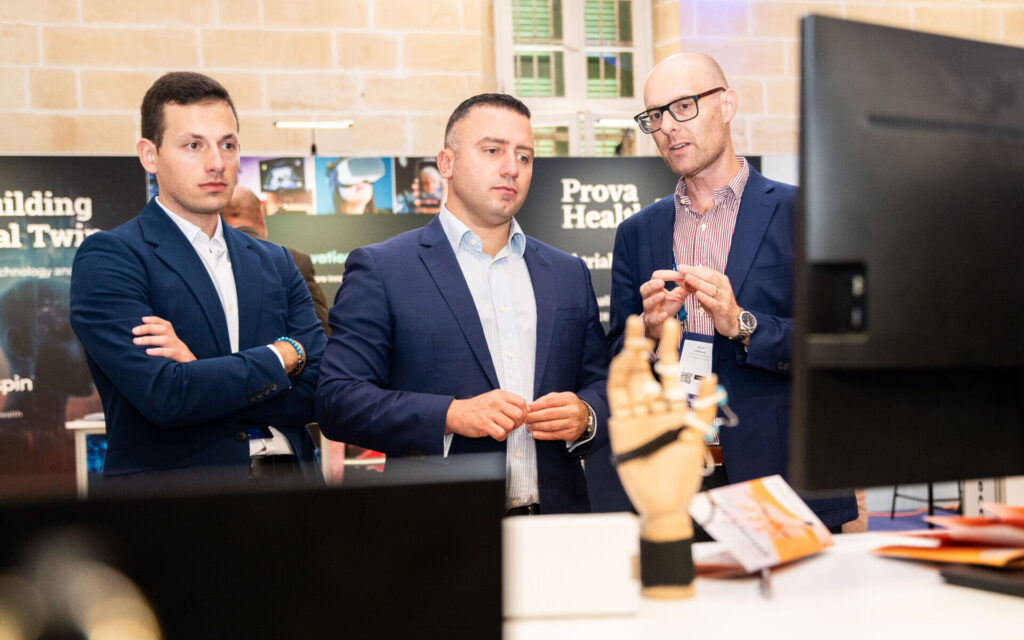
Continuing, he elaborated on how the service layer allows occupational therapists to track hand function progress throughout the therapy program. Comprehensive data on finger movements is securely stored and easily accessible via a cloud-based system. This data facilitates progress analysis, personalised goal-setting, and adjustment of session difficulty levels.
Crucially, remote data capture and access empower children to use the device in their familiar surroundings under therapist supervision.
User feedback driving innovation
Embracing a user-centric approach means centring the user at every stage of design. Considering this, it’s evident how crucial the input from children with CP and their families was in shaping DIGICLAP.
How significant was their feedback in moulding the device’s design and functionality?
“Beyond the primary user, the child with CP, DIGICLAP considers input from other stakeholders in its design, including occupational therapists and parents,” Matthew Bonello, the design engineer and the Research Support Officer on the project, noted. “While these secondary users may not directly engage with the device, they reap the benefits of its utilisation and results.”of its utilisation and results.”
Matthew detailed the development process of DIGICLAP and its platform. Initially, focus groups were conducted with target users to establish key requirements for a user-friendly PSS. Following this, one-to-one sessions were held with primary users to identify their typical needs and personal goals.
Later, after creating initial prototypes, users participated in evaluation sessions to assess early interactions with the product and game. Insights from these evaluations were used to refine the device’s design and game functionality. This iterative process resulted in a more secure and comfortable device, meeting user requirements and enhancing their overall experience.
Research is pivotal
To assess DIGICLAP’s impact, a mixed-method research approach was taken, blending quantitative and qualitative data. Quantitative data included raw motion capture sensor data, game scores, and user rating scores. Qualitative aspects, such as device comfort, appearance, ease of use, and enjoyment, were also evaluated to gauge overall user experience.
Initial evaluation studies suggest that DIGICLAP contributes to improving hand function in children with CP. By capturing even subtle movements, it encourages engagement in therapy sessions and boosts self-esteem by raising awareness of capabilities. Additionally, it provides opportunities for children to play games that would otherwise be challenging due to mobility limitations
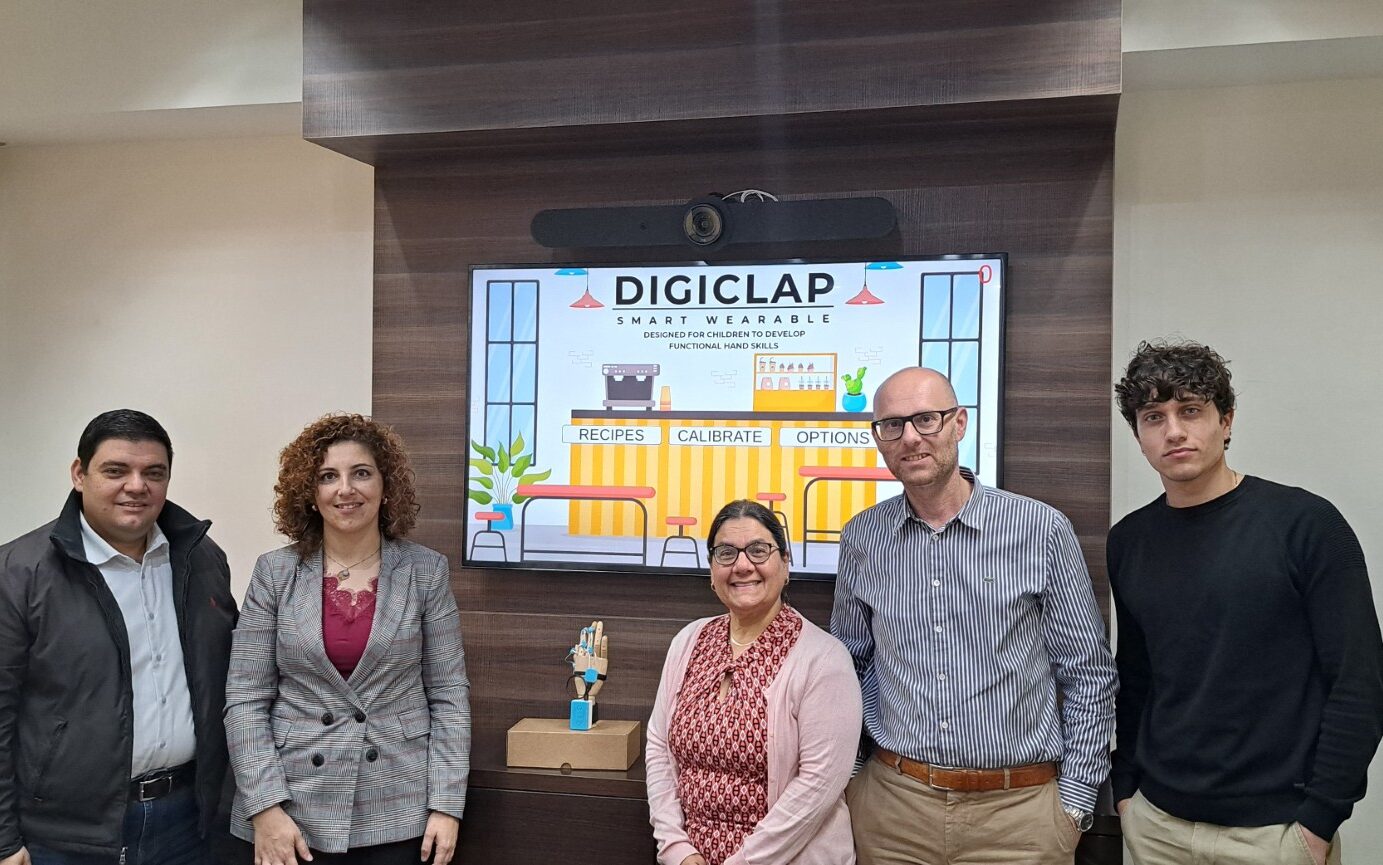
How pivotal were these combined quantitative and qualitative findings?
“Given the limited number of participants from the local CP population, qualitative data supplemented quantitative findings. This included observational notes from sessions and feedback from users, including one-to-one interviews with parents and focus groups with therapists,” Dr. Nathalie Buhagiar, a paediatric occupational therapy expert, highlighted. “These insights offer a comprehensive understanding of DIGICLAP’s impact and how it benefits each individual.”
Lessons in challenges
Developing DIGICLAP posed significant challenges, particularly in participant recruitment and navigating the COVID-19 pandemic’s impact. Malta’s small population and scarcity of children with CP made finding suitable participants and experienced therapists challenging. COVID-19 safety measures further hindered participant recruitment and delayed prototyping due to electronics shortages.
Technical difficulties in interfacing the game with the device added complexity.
“Despite these challenges, valuable lessons were learned, including the importance of adaptability and effective communication. Interdisciplinary collaboration was key to overcoming obstacles and achieving success.”
Professor Philip Farrugia concluded our conversation with an inquisitive and determined look towards the future. DIGICLAP’s evolution includes usability testing of the latest version and evaluation with a diverse sample, including adults with various disabilities. Plans to obtain CE marking certification signal readiness for market accessibility, potentially improving the quality of life for individuals benefiting from this innovative technology.
DIGICLAP was developed through the financial support received from the Malta Council for Science and Technology through the projects SMARTCLAP (R&I-2019-003-T) and CuraCLAP (R&I-2019-003A). Both projects have been led by Prof. Inġ. Philip Farrugia from the Department of Industrial and Manufacturing Engineering at the University of Malta. Other members of the research team are Mr Matthew Bonello, Dr Nathalie Buhagiar, Mrs. Sharon Borg, Mr Joseph Mercieca, Prof. Inġ. Simon G. Fabri, Prof. Inġ. Owen Casha, Dr Inġ. Mario Farrugia, Prof. Alexiei Dingli and Mr Benjamin Spiteri (both from HumAIn ltd.), and Inġ. David Sciberras (from Invent3D ltd.).
Save the Date: MedTech Malta 2024
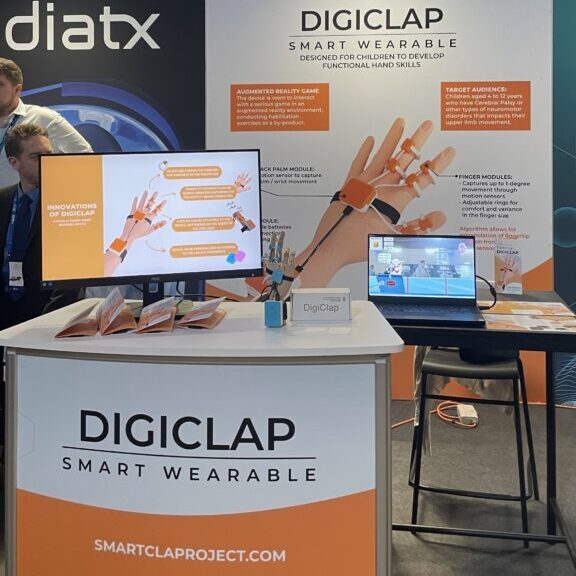
Back in 2023, MedTech World had the privilege of hosting SMARTCLAP‘s booth, showcasing their innovative solutions. If you missed the chance to connect with them then, or if you’re eager to meet similar brilliant minds, mark your calendars for MedTech Malta 2024.
From November 6th to 8th, MedTech World will bring together investors and entrepreneurs for another groundbreaking edition of MedTech Malta. This event is dedicated to assembling an innovation ecosystem, fostering relationships, connections, and partnerships in the heart of Malta.
Malta, with its rich heritage and strategic European location, provides an inspiring backdrop for MedTech startups, investors, and industry leaders. The Mediterranean Conference Centre, nestled in the heart of Valletta, offers a blend of historical grandeur and modern sophistication, creating the perfect setting for collaboration.
Join us for three days of panel discussions, CEO workshops, technology showcases, networking sessions, pitch competitions, cultural activities, and the MedTech Malta Awards Gala.
Don’t miss this opportunity to be part of healthcare transformation. Get your tickets now.





